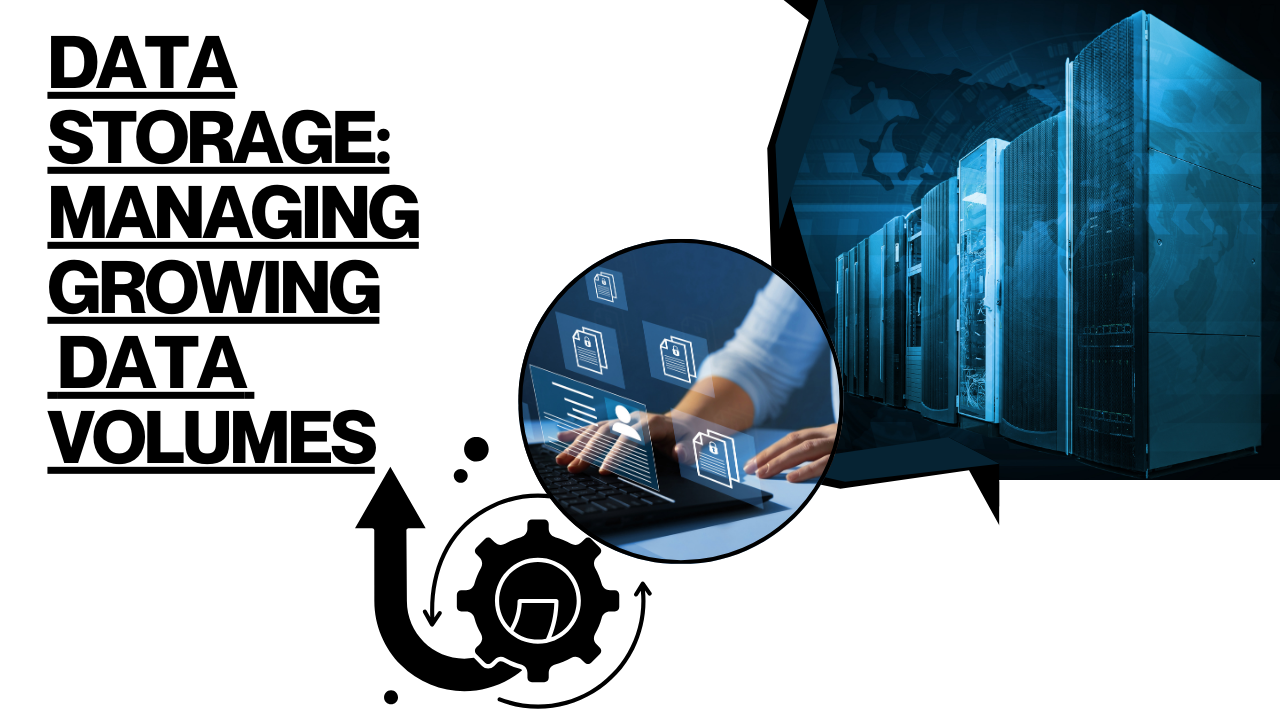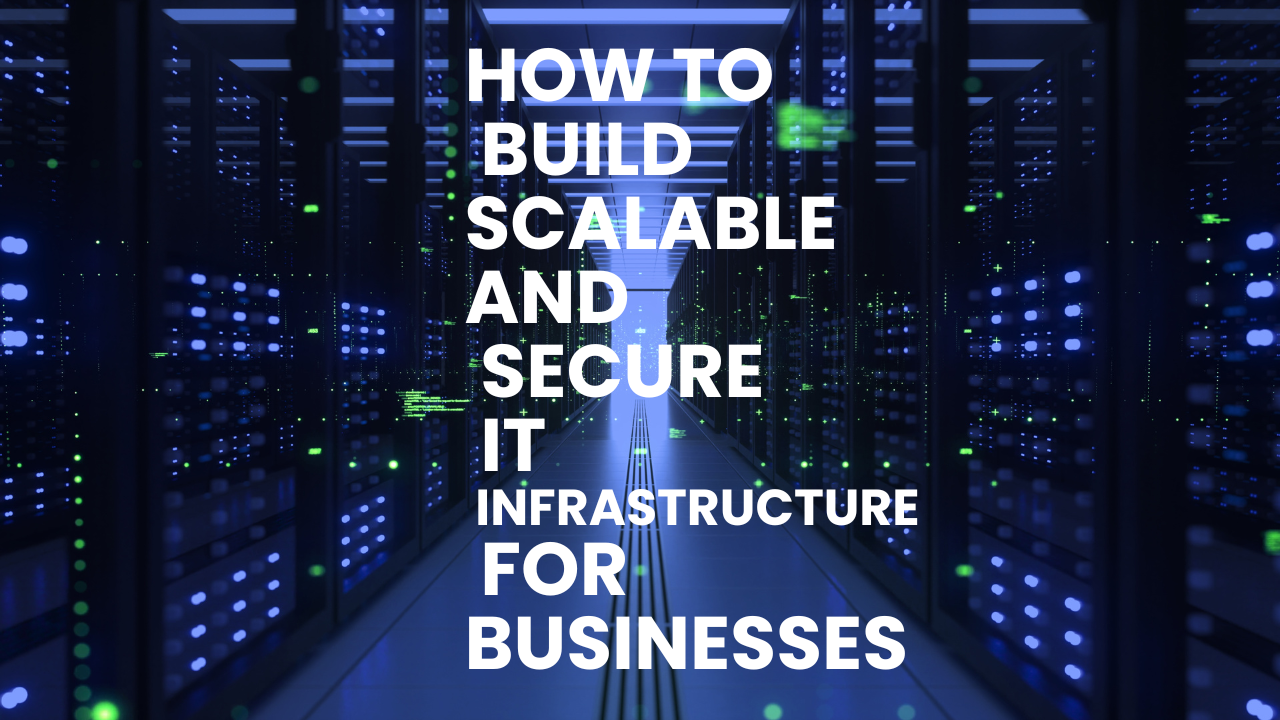Building a scalable and secure IT infrastructure is one of the most critical investments a business can make in today’s digital world. As businesses grow, their IT needs become more complex, and ensuring that their systems can scale securely is vital for sustaining growth and avoiding costly disruptions.
This article will cover the essential strategies and best practices for building an IT infrastructure that not only meets a business’s current needs but can grow seamlessly and securely over time.
What Is Scalable IT Infrastructure?
Scalable IT infrastructure refers to systems, networks, and services that can expand efficiently as a business grows. Instead of needing a complete overhaul, scalable infrastructure can adapt to increasing workloads, larger datasets, more users, and more complex applications.
What Is Secure IT Infrastructure?
Secure IT infrastructure involves ensuring that a business’s IT systems are protected from external and internal threats. This includes physical security, network security, data encryption, user authentication, and constant monitoring to prevent breaches or data leaks.
Key Components of Scalable and Secure IT Infrastructure
To build a robust IT infrastructure, businesses should focus on the following key components:
- Networking
- Data Storage
- Cloud Computing
- Cybersecurity
- Servers and Hardware
- Disaster Recovery and Backup Solutions
Each of these elements plays a critical role in building an IT infrastructure that can scale while maintaining security.
Network Infrastructure: The Backbone of IT Systems
A scalable network infrastructure ensures that businesses can expand their operations without disrupting their services. To design a network that can scale, consider the following strategies:
Use Virtual Private Networks (VPNs)
VPNs are essential for businesses with remote workers or multiple office locations. A VPN can help ensure secure communication over the internet and allow seamless connectivity between different branches.
Implement Software-Defined Networking (SDN)
Software-defined networking enables more efficient network management by allowing centralized control of network traffic. SDN is ideal for businesses looking to scale their networks because it can optimize bandwidth and adapt to changes in real time.
Scalable Bandwidth
As your business grows, so will the number of devices and users accessing the network. Scalable bandwidth solutions allow your network to handle increasing traffic without causing slowdowns or outages.
Data Storage: Managing Growing Data Volumes
The amount of data a business generates will inevitably grow, and storing this data securely while ensuring fast access is crucial.
Cloud-Based Storage Solutions
Cloud storage is one of the most scalable and cost-effective solutions for businesses. Services such as Amazon Web Services (AWS), Microsoft Azure, and Google Cloud allow businesses to store vast amounts of data and scale as needed.
Hybrid Storage
A hybrid approach combines on-premises storage with cloud solutions. This allows businesses to keep sensitive data in-house while utilizing the cloud for less sensitive data or for expanding storage capacity when needed.
Data Encryption
Ensuring that data is encrypted both in transit and at rest is essential for maintaining security, especially when dealing with sensitive information. Many cloud providers offer encryption services as part of their offerings.
Cloud Computing: Flexibility and Scalability for Businesses
Cloud computing plays a pivotal role in building scalable IT infrastructure. It allows businesses to deploy applications and services without the need for expensive hardware investments.
Scalable Cloud Platforms
Using cloud platforms like AWS, Google Cloud, or Microsoft Azure can provide businesses with scalable computing power, databases, and applications on demand. These platforms allow businesses to scale resources up or down depending on usage, which can help manage costs effectively.
Platform as a Service (PaaS)
PaaS solutions allow businesses to develop, run, and manage applications without dealing with underlying infrastructure complexities. This makes it easier for companies to scale their applications while focusing on development rather than hardware.
Cybersecurity: Ensuring Infrastructure Security as You Scale
As businesses scale, they become more attractive targets for cybercriminals. Security must be integrated into every aspect of IT infrastructure to avoid breaches and data loss.
Firewalls and Intrusion Detection Systems (IDS)
Firewalls are the first line of defense against unauthorized access to your network. Paired with IDS, which monitors your network for suspicious activities, these tools help keep your IT environment secure.
Multi-Factor Authentication (MFA)
MFA adds an extra layer of security by requiring users to provide two or more verification factors to gain access to systems or applications. This reduces the chances of unauthorized access even if a password is compromised.
Security Information and Event Management (SIEM)
SIEM tools analyze security logs and data in real-time, helping IT teams detect potential security threats before they cause damage. SIEM is especially useful for businesses with complex infrastructures as it allows for continuous monitoring.
Servers and Hardware: Building the Foundation
Servers are the foundation of any IT infrastructure. As your business grows, you will need to ensure that your servers can handle the increased workload without sacrificing performance.
Virtualization
Virtualization allows businesses to create virtual machines (VMs) that run on a single physical server. This increases efficiency and scalability by allowing multiple applications to run on one piece of hardware, reducing the need for physical servers.
Hyperconverged Infrastructure (HCI)
HCI combines computing, storage, and networking into a single system, simplifying IT management and making it easier to scale. HCI is ideal for businesses looking for a cost-effective and scalable solution for managing large amounts of data.
Server Load Balancing
As your infrastructure grows, server load balancing ensures that workloads are distributed evenly across multiple servers, preventing any one server from being overwhelmed and improving overall performance.
Disaster Recovery and Backup Solutions: Preparing for the Worst
Every business must have a robust disaster recovery plan in place to protect against data loss or system failures.
Cloud Backup Solutions
Cloud-based backup solutions ensure that your data is protected and can be restored quickly in the event of a disaster. Services like AWS Backup or Azure Site Recovery allow businesses to automate backups and ensure that critical data is always secure.
Business Continuity Plans
A business continuity plan ensures that your business can continue operating even after a major IT disruption. This involves having redundant systems, clear communication plans, and rapid recovery solutions to minimize downtime.
Testing Your Disaster Recovery Plan
It’s not enough to have a disaster recovery plan; businesses need to regularly test their plans to ensure they are effective. Regular testing allows businesses to identify weaknesses and address them before they lead to real problems.
Automation and Monitoring: Efficiently Managing IT Infrastructure
Automation tools can significantly improve the efficiency and scalability of IT infrastructure management.
Infrastructure as Code (IaC)
IaC allows businesses to manage and provision computing resources through machine-readable scripts. This not only reduces manual errors but also allows for the quick deployment of new servers or services as needed.
Continuous Monitoring and Maintenance
Proactive monitoring tools are essential for detecting potential issues before they lead to downtime. These tools can monitor server health, network traffic, and application performance, ensuring that your infrastructure operates smoothly.
Automation for Routine Tasks
Automation can help reduce the workload of IT teams by automating routine tasks such as patch management, system updates, and backups. This not only saves time but also reduces the risk of human error.
Scalability and Cost Optimization: Balancing Growth and Budget
While it is essential to build an IT infrastructure that can scale, businesses must also keep costs in check. Scaling too quickly or investing in unnecessary infrastructure can lead to overspending.
Elasticity in Cloud Services
Cloud services offer elastic pricing models that allow businesses to pay only for what they use. By scaling resources up or down based on real-time needs, businesses can avoid over-provisioning and keep costs manageable.
Right-Sizing Resources
Right-sizing ensures that businesses allocate the correct amount of computing power, storage, and network bandwidth for their needs. This prevents over-investment in resources that are not being fully utilized.
Conclusion
Building a scalable and secure IT infrastructure is a critical component of modern business growth. By focusing on cloud computing, cybersecurity, network management, and data storage solutions, businesses can ensure that their IT infrastructure not only meets their current needs but also scales seamlessly as they expand.
A well-designed IT infrastructure is more than just a technical necessity – it is a strategic investment in the future growth and success of any business. By implementing the right tools, automating routine processes, and maintaining a robust security posture, businesses can thrive in the fast-paced digital landscape.
FAQs
What is scalable IT infrastructure?
Scalable IT infrastructure refers to a system that can efficiently handle growing demands as a business expands. It allows companies to increase capacity, such as adding more users, handling larger datasets, and supporting more complex applications, without requiring a complete overhaul of their systems.
Why is secure IT infrastructure important for businesses?
A secure IT infrastructure protects a business from cybersecurity threats, such as data breaches, malware, and unauthorized access. It ensures that sensitive data is kept safe, business operations remain uninterrupted, and compliance with regulations is maintained.
What are the key components of a scalable IT infrastructure?
The key components include:
- Network Infrastructure
- Data storage solutions (cloud, on-premise, or hybrid)
- Cloud computing
- Cybersecurity measures
- Servers and Hardware
- Disaster recovery and backup solutions
How does cloud computing contribute to scalability?
Cloud computing provides businesses with flexible and scalable access to computing resources. Cloud services allow companies to expand or reduce their use of resources (storage, processing power, etc.) based on current demands, making it a cost-effective solution for scaling.
What is the role of cybersecurity in building IT infrastructure?
Cybersecurity is essential for protecting a business’s IT infrastructure from attacks, data breaches, and unauthorized access. A well-rounded security approach includes firewalls, encryption, multi-factor authentication, and regular system monitoring.
